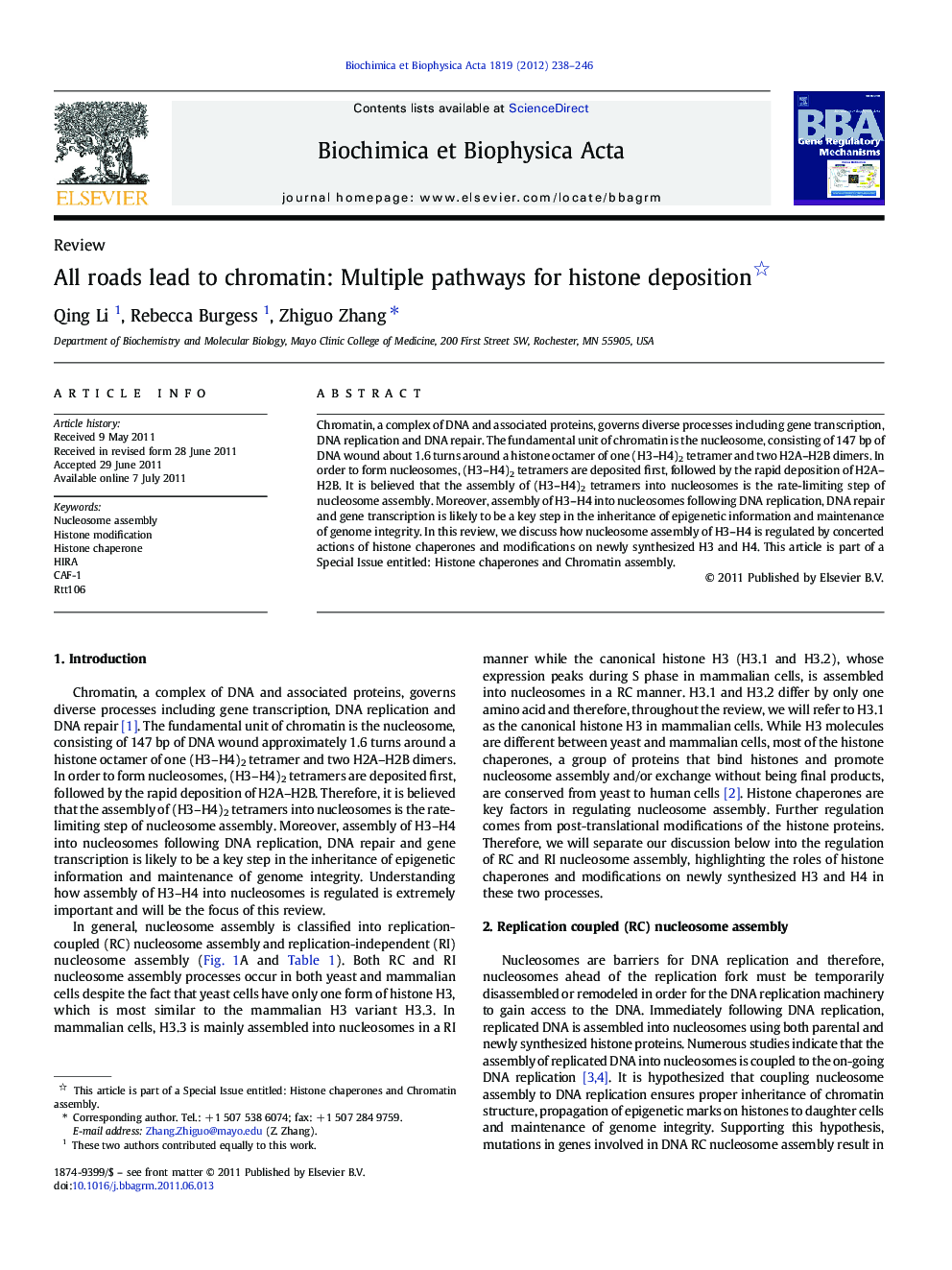| Article ID | Journal | Published Year | Pages | File Type |
|---|---|---|---|---|
| 1946529 | Biochimica et Biophysica Acta (BBA) - Gene Regulatory Mechanisms | 2012 | 9 Pages |
Chromatin, a complex of DNA and associated proteins, governs diverse processes including gene transcription, DNA replication and DNA repair. The fundamental unit of chromatin is the nucleosome, consisting of 147 bp of DNA wound about 1.6 turns around a histone octamer of one (H3–H4)2 tetramer and two H2A–H2B dimers. In order to form nucleosomes, (H3–H4)2 tetramers are deposited first, followed by the rapid deposition of H2A–H2B. It is believed that the assembly of (H3–H4)2 tetramers into nucleosomes is the rate-limiting step of nucleosome assembly. Moreover, assembly of H3–H4 into nucleosomes following DNA replication, DNA repair and gene transcription is likely to be a key step in the inheritance of epigenetic information and maintenance of genome integrity. In this review, we discuss how nucleosome assembly of H3–H4 is regulated by concerted actions of histone chaperones and modifications on newly synthesized H3 and H4. This article is part of a Special Issue entitled: Histone chaperones and Chromatin assembly.
► We review the literature on replication‐coupled and replication‐independent nucleosome assembly. ► We highlight the functions of histone chaperones in nucleosome assembly. ► We discuss the roles of histone modifications in nucleosome assembly. ► We speculate the future direction of the nucleosome assembly field.
